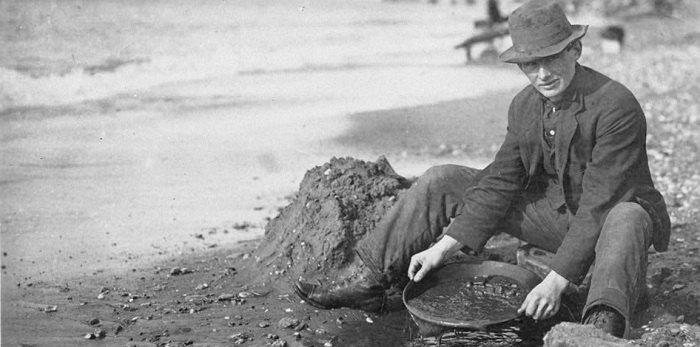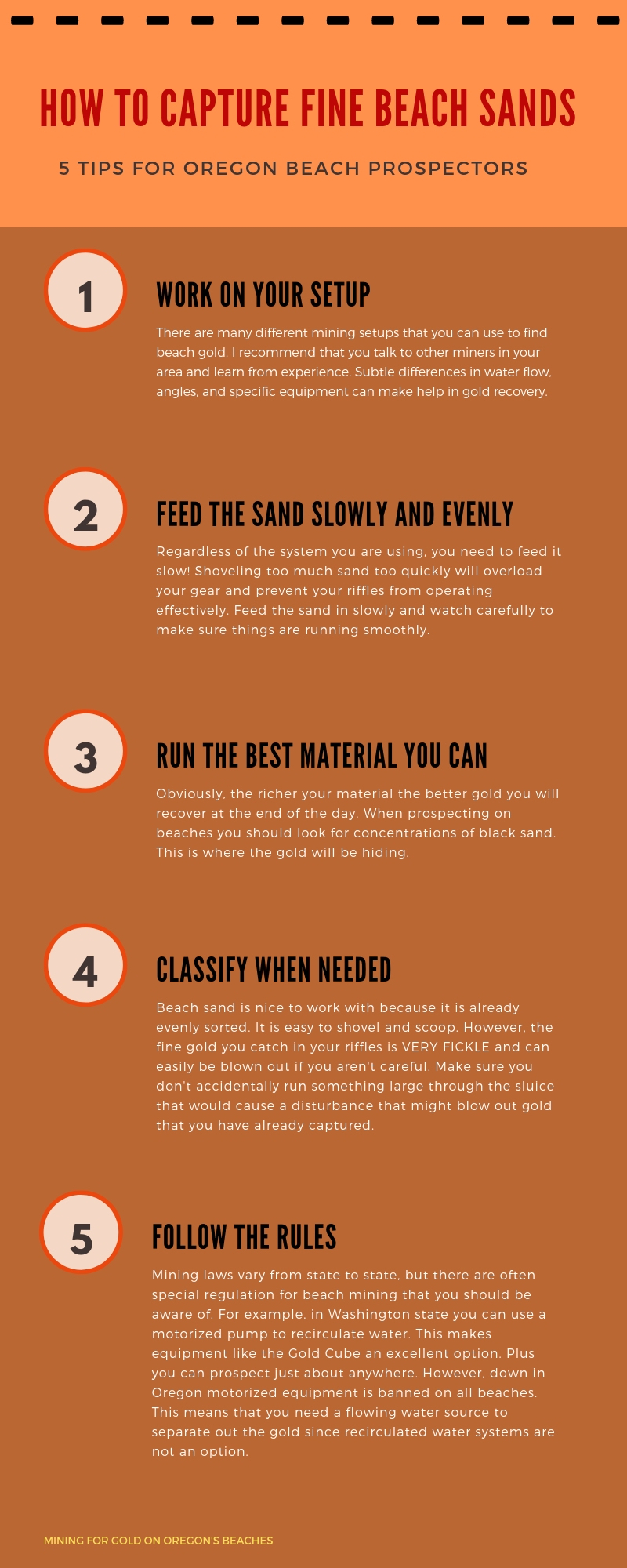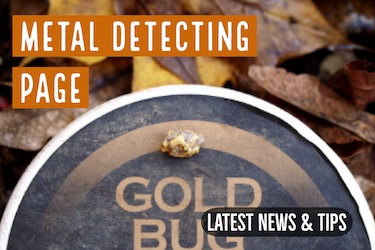The beach sands of southern Oregon contain a hidden treasure that many people are completely unaware of… gold!
I’m not talking about pirate’s treasure, old coins or lost jewelry. Instead it is rich placer deposits of fine gold that are naturally occurring throughout the beaches ranging from the California border up towards Florence, with the richest deposits found around Coos Bay and Gold Beach.
You may not see much mining activity today, but when the first discoveries of gold were made here as early as 1852, there was an influx of miners to the area searching for gold within the beach sands.

Where did the Gold come from?
This discovery coincided with the gold rush that was occurring a bit further inland. At the time, gold had just been discovered on many major tributaries including Applegate River, Illinois River, Althouse Creek, and of course throughout the Rogue River.
At this point in history, mining was in full swing throughout California, particularly in the Sierra Nevada Mountains and further north as far as Siskiyou County. Prospectors venturing further north also found that the goldfields extended well into Oregon as well, with many exceptionally rich discoveries that rivaled those of California.
It is believed that the placers that are found in southern Oregon’s beaches come from the deposits of the Rogue River that entered the ocean.
Panning Gold on the Oregon Coast
Many places in Oregon have produced large gold nuggets, but the beach is not one of those places. In fact, the beach gold found here is known to be exceptionally fine textured making it some of the most challenging types of gold to capture.
Unlike larger gold that can be easily recovered using typical prospecting equipment, most successful miners who look for gold in southern Oregon use specialized gear that works particularly well on the fine gold that is found here.
The other challenge is access to water. Now certainly there is lots of water at the beach, but the tide works much differently than a creek or river because the flow is not constant.
To get a consistent flow of water for sluicing, most prospectors situate themselves where a creek or river enters the ocean. This way a sluice can be set up in the creek and sand is readily available to run through the sluice box.

Where to Dig for Gold
If you are in a good location you can likely find some gold in just about any sand, but as any successful gold miner will tell you, you need to spend some time prospecting to locate the richest areas.
First, you will do best to focus your efforts in areas that have historically been known to be the richest. During the 1800’s and into the 1930’s there were several commercial mining operations along the beaches in Oregon. Most of these were in the general vicinity around Gold Beach and south of Coos Bay, but further research will show that there are some areas even further north where miners were able to profitably find gold.
Second, you need to concentrate your efforts on black sands. Black sands are comprised of heavy iron minerals, and gold is naturally going to be found among these black sands. Just walking along the beach you will see “stringers” of black sand throughout the normal beach sands. Carefully use a plastic scoop to separate out these black sands to pan them out.
You can also locate black sands by digging a pit. You will find stringers of black sands when you are digging, and these are the places where the gold will be most concentrated.
Special Equipment for Beach Gold
As mentioned before, the tiny specks of gold that you will find at the beaches of southern Oregon will require extra care if you want to capture it. If you have a sloppy mining technique it will be easy to lose the gold. Whether you are panning, sluicing, or using one of the many types of specialized mining gear that is designed for fine gold, make sure that you have it set up properly so that it will retain the finest gold without significant losses.

Next: Focus Prospecting Efforts on Fine Gold Placers








